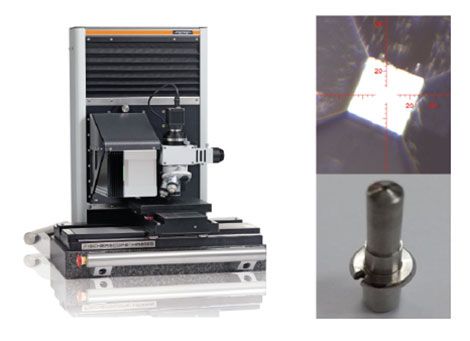
Carbon Fiber Reinforced Plastic or Carbon Fiber Reinforced Polymer (CFRP) is known for its high strength to weight ratio, excellent high-temperature characteristics and resistance fatigue. CFRP has gained substantial interest in manufacturing industries especially in the weight-critical aerospace industry. Also, it has applications in automotive, marine and civil engineering industries.
Carbon fiber is the backbone of CFRP and is responsible for its strength. Each carbon fiber is a long thin strand made of thousands of carbon filaments with a diameter of 5-10μm. The compressive strength of carbon fiber is significantly less than its tensile strength. Thus, in industry applications, axial compressive strength is usually used as the basis for its design rating. This ensures the safety and functionality of the finished product.
The FISCHERSCOPE® HM2000 (Fig. 1) is an automated instrumented indentation measuring instrument which is ideal for performing compressive strength testing on carbon fiber using a special 50μm Flat Indenter (see Fig.1). The FISCHERSCOPE® HM2000 is known for its high resolution and precision which is ideal for measuring small and brittle samples such as carbon fibers.

FISCHERSCOPE® HM2000 (left) with microscopic view of Flat; Indenter (right).
The FISCHERSCOPE® HM2000 is intuitive and does not require special specimen preparation for such tests. Simply place the CFRP sample on the measuring stage, check the monofilament diameter, and start the measurement.
The graph below (Fig. 2) shows the carbon fiber measurement process. As the indenter contacts the surface of the carbon fiber, the load increases linearly. Once the sample is crushed, the load curve gradient will increase rapidly. This occurred at a test force of 1547mN and compression (indentation depth) of 3.6 μm (see detail X in Fig. 2) for this sample. This force value is used to calculate the effective stress of the fiber in terms of compression. The microscopic images in Fig. 3 shows fragments of the remaining fiber after the fiber is fully crushed.

Graph showing Test force [mN] against Compression (Indentation depth [μm]).

Microscopic picture of the the small fiber before (left) and after the indentation (right).
